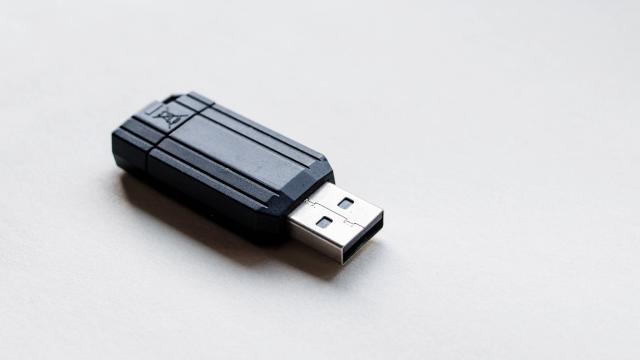We’ve all lost a flash drive or two. Whether it was a cheap USB drive containing some promotional material, or a top secret one detailing the security protocol pertaining to a certain Queen of England’s travel plans, sometimes we forget things, and have to hope that our sensitive information doesn’t fall into the wrong hands. Securing your hardware by encrypting your flash drive beforehand will prevent unauthorised individuals from getting into your misplaced media. It won’t get your flash drive back any faster, but you’ll know that you and your data aren’t in danger while your USB is at large.
Image credit: Marco Verch/Flickr
Mac Users: Finder Can Encrypt it For You
If you’re using a Mac to encrypt your flash drive, you’ll need to make some slight modifications to that drive beforheand. Apple uses the HFS+ filesystem to encrypt removable media, so you’ll need to format the drive using that filesystem. Open the Disk Utility app, select your USB drive, and pick Erase. Choose the MacOS Extended (Journaled) format and erase the drive, formatting it with the proper filesystem.
Now you’re ready to encrypt your drive. In the Finder, right-click your USB drive. Select “Encrypt” and enter a password to keep uninvited guests out. Encryption isn’t instant, so you might be waiting for a few minutes depending on how large your flash drive is. Still, you’ll have a secure flash drive in the end, and won’t have to worry about leaking secret routes for royalty in Heathrow Airport.
Windows Users: Try BitLocker or Veracrypt
Windows features its own built-in file encryption software, dubbed BitLocker. It’s found in Pro, Ultimate or Enterprise versions of Windows Vista and onward, including Windows 10. BitLocker works with NTFS, FAT or FAT32 filesystems. Right-clicking your drive and choosing “Format” will let you choose which file system you want to use on your newly formatted drive.
From there, encrypting your removable drive is pretty easy. Select the drive in your file explorer, and hit the Manage tab up top. Select BitLocker, then Turn BitLocker On. You’ll have to enter your password twice, or use a smart card if you have one available. You can then save your recovery key (in case you forget your actual password) to your Microsoft account, to a file on your PC, or print it out and store it somewhere secure.
If you’re using a different version of Windows, or for some reason would rather avoid using BitLocker, you can always use VeraCrypt.

Comments
One response to “Encrypt Your Flash Drive To Ensure Your Peace Of Mind”
Even better tip, don’t carry around sensitive stuff on a flash drive. Use some other secure communication method, or use it to transfer stuff between machines and clear it.